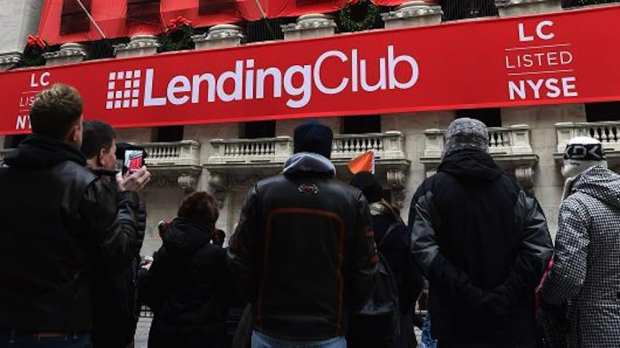LendingClub Loan Applications Surge 18 Pct Despite Earnings Miss

LendingClub shares sank on guidance that missed the Street, but management said fourth quarter lending activity was strong across personal and auto loans, even as the macro environment moving forward is an uncertain one.
LendingClub reported that loan originations were up double digits in the fourth quarter of 2018, marked by growth in personal loans and auto loans in what the company termed as dynamic and competitive markets, and amid rising interest rates.
Headline results missed the Street, as adjusted loss per share on the bottom came in at a penny, while the Street had expected earnings of two cents per share. The company is targeting bottom-line profitability in the second half of the year, according to management. The top line of $181.5 million was slightly below the Street at about $182 million.
In terms of loan-specific numbers, LendingClub said that fourth quarter originations were up 18 percent to $2.87 billion. That was slightly below the $2.89 billion seen in the third quarter, and up from $2.44 billion last year.
Drilling into supplementals and origination data, standard personal loans were $2 billion, while custom loans were $611 million. The latter were defined as loans made to near-prime and super-prime borrowers.
The company, as has been its practice, broke down its revenue contribution. While the $181.5 million reported was up 16 percent year on year, yield on its lending activity (revenues as a percentage of originations) was at 632 basis points, down 10 basis points from last year.
Banks made up 41 percent of originations, compared to 36 percent in the fourth quarter of last year. In reference to its servicing portfolio balance, that tally was $13.7 billion, compared to $11.9 billion a year ago.
Looking ahead, management said that it sees first quarter expectations of $162 million to $172 million, below a consensus of $182 million. While the company has seen adjusted net income profitability in the back half of the year, as noted above, the Street had come into Tuesday’s (Feb. 19) results looking for profitability in each of the year’s quarters.
On the post-earnings conference call, CEO Scott Sanborn told analysts that LendingClub came through the end of the year having executed on goals of boosting personal lending, auto loan activity and securitizations. He said that, through the year, the company had grown its personal loan activity by more than 35 percent to 14 million. Furthermore, LendingClub tightened credit by 17 percent, and raised interest rates across its credit spectrum by between 49 and 114 basis points.
Application processing times for auto loans were reduced by 80 percent through the year, noted Sanborn, adding that originations doubled in 2018. Auto, he said, “will be a long-term driver of our growth.”
On the call, management noted that its CLUB Certificate Program touched the $1 billion mark in the quarter, less than a year after launch. The program is defined as whole loan transactions structured as tradeable pass-through securities.
Delinquencies and charge-off rates remain stable, according to commentary on the call.
In reference to the Federal Trade Commission (FTC) suit filed last year, which said the company charged fees amid declarations that its loans carried no hidden costs, Sanborn said the recent government shutdown has hampered progress. While LendingClub believes the facts do not support the allegations in the FTC’s complaint, he noted that the company would take proactive steps to address changes to its application process.
When asked about this on the call, Sanborn said, “They are really pretty minor changes. … We do not expect any significant impact to our operations or our business.” Among the changes is an additional disclosure of the origination fee further up in the application process.
In reference to guidance, management stated that the range reflects what CFO Tom Casey said was “uncertainty we see in the macro economic environment.”
During the Q&A with analysts, Sanborn said that, though the credit environment is moving back toward historical trends after a “super benign” period, “the higher-risk side of prime is starting to normalize.”
